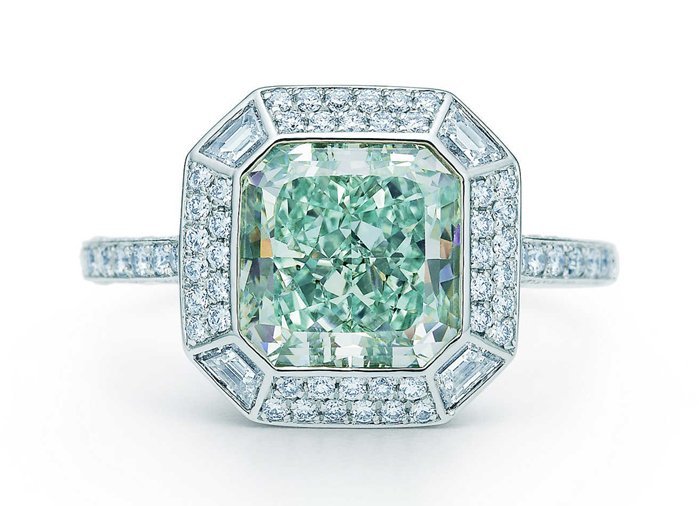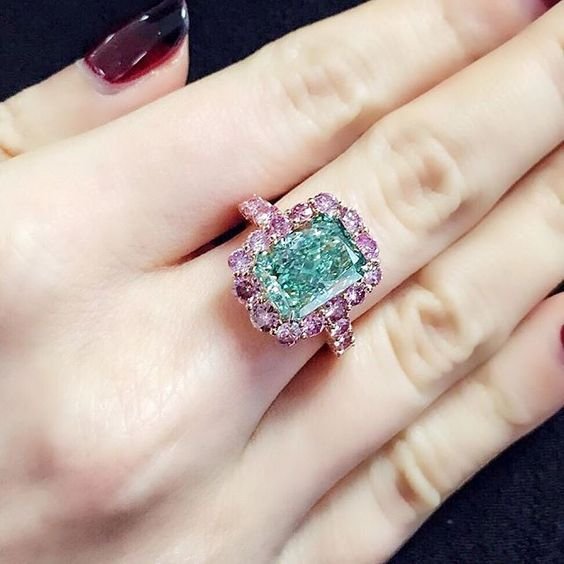GREEN WITH ENVY: THE ALLURE OF GREEN DIAMONDS
Gemmologists and collectors alike are fascinated by green diamonds not only because the hues and tones in this gem vary so greatly, but because it is not yet fully understood why they occur.
Of the coloured diamonds in the spectrum, red and green are the rarest. Chromacity is usually determined in other diamonds due to the trace presence of elements; in green the result is thought to come about after the stone has been exposed to radiation over a period of thousands of years. The source of radiation is usually uranium near the Earth’s surface. As these unlikely conditions have to be absolutely perfect for this to happen, the appearance of a green diamond is a genuinely rare natural occurrence. The effect can be replicated in a laboratory, achieving the same effect, making the differentiation between the natural and the artificial extremely difficult.
Green diamonds are always submitted to a gem laboratory to establish the origin of colour, but even with today’s advanced technology it is not always possible for the lab to produce a satisfactory assessment. Most of them are not green all the way through; many have green radiation blotches or stains on the surface which get polished away during the cutting process, which means the colour is lost. Cutters have to work their way around this in order to present the highest colour saturation in the best way. It is highly unusual for a stone to be evenly coloured all the way through, but they do occur.
Generally, the longer the exposure to radiation, the deeper in to the gem the colour will have penetrated. How deep the colour has gone will also determine the hue. Coloured diamonds, apart from their primary colour will also have a secondary colour; green diamonds have two, blue and yellow, making their classification difficult. Hues, therefore, range from the palest mint green, through to vivid parrot and intense olive green. More often than not green stones will be named yellowish green, greenish blue, blueish green and so forth.
The most famous green diamond in world is also the largest: the Dresden Green, weighing in at 41 carats. It was acquired by Augustus, King of Poland and Elector of Saxony in 1742 and it remains on view in the Green Vaults in Dresden today. It sets the benchmark for all stones of its kind because its colour is natural and homogenous all the way through, experiments with radiated diamonds not beginning until 1904. Gemmologists were allowed to study it in detail and their results were inconclusive- they determined that additional research is required to establish the definite cause of green in diamonds. I rather like the fact that some precious stones still retain some genuine mystery.
A notable example of an exceptional green is the Ocean Dream diamond which possesses a truly unique bluish green hue that gives it its name. It weighs 5.5 carats and was recently exhibited at the Smythsonian’s ‘Splendor of Gems’ exhibit. Another gem worthy of a mention is the Aurora Green, a spectacular fancy vivid green weighing 5.03 sold in Hong Kong by Christie’s last year; the sale fetched $16.8 million, or $3.3 million a carat, a record for a stone of its kind. Enough to wake the green eyed monster in any of us.
The Aurora Green, weighing in at 5.03 carats. It was sold by Christie's for $16.8 million, setting a record for a diamond of its class.
The biggest, most famous green diamond in the world: the Dresden Green, weighing 41 carats.




